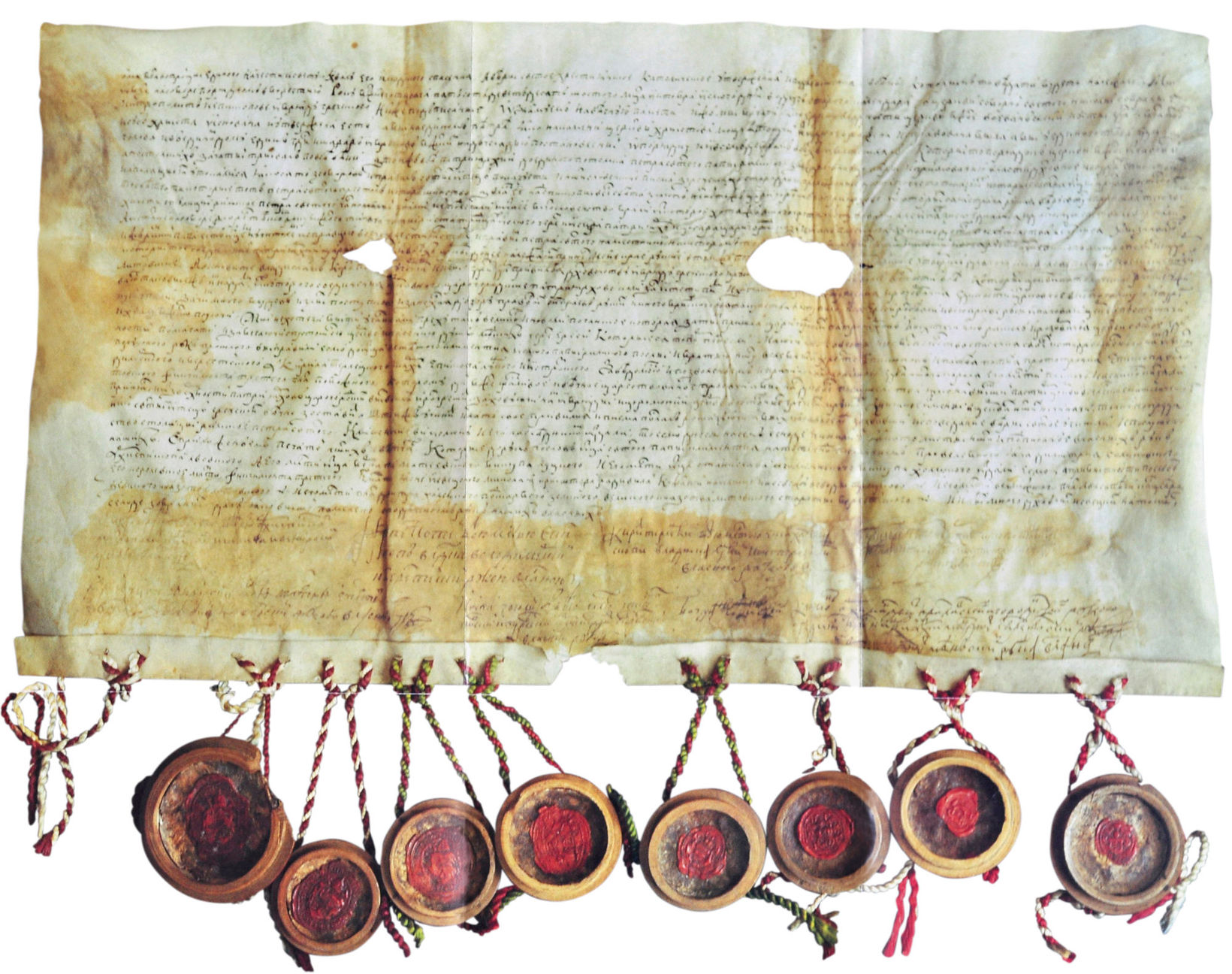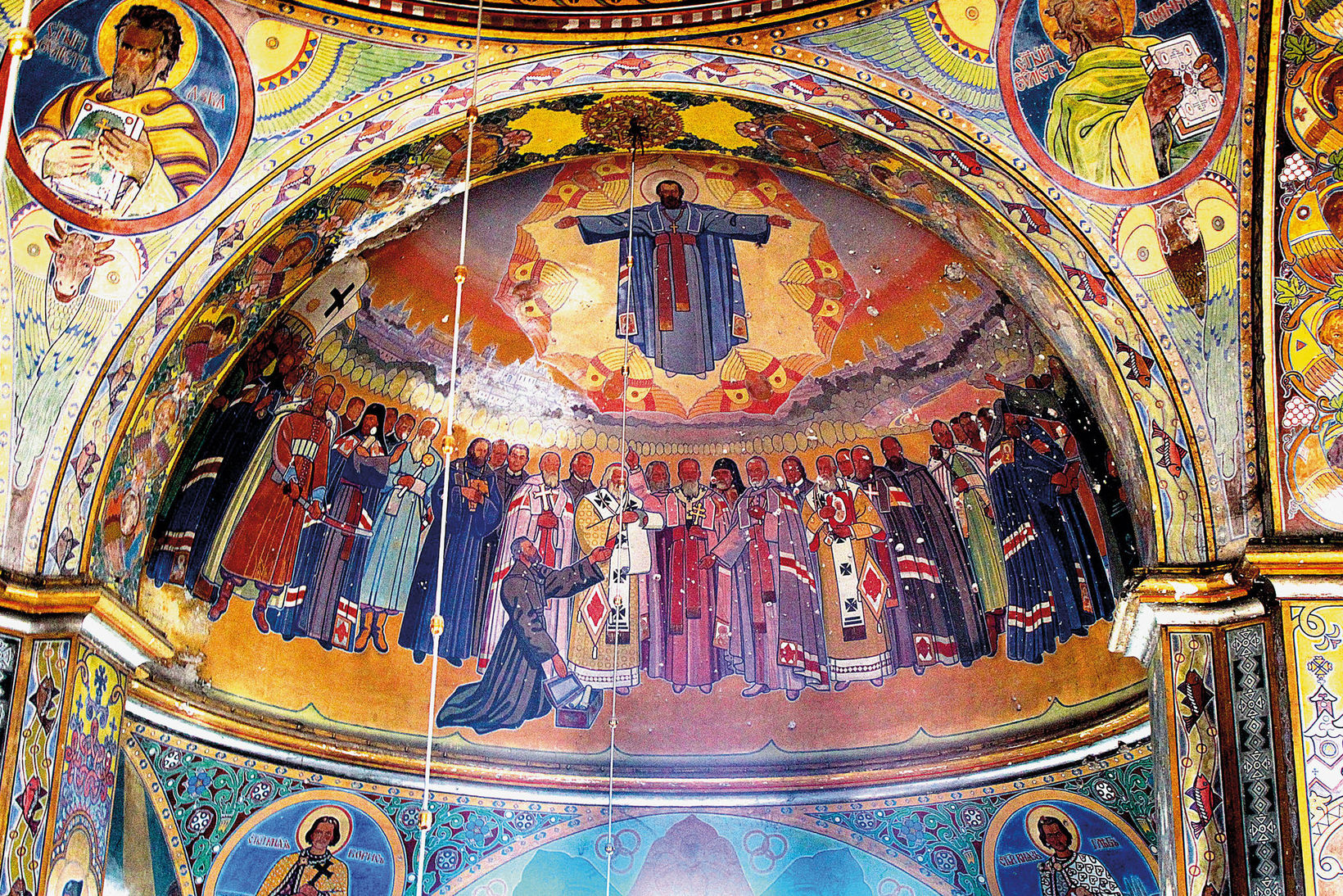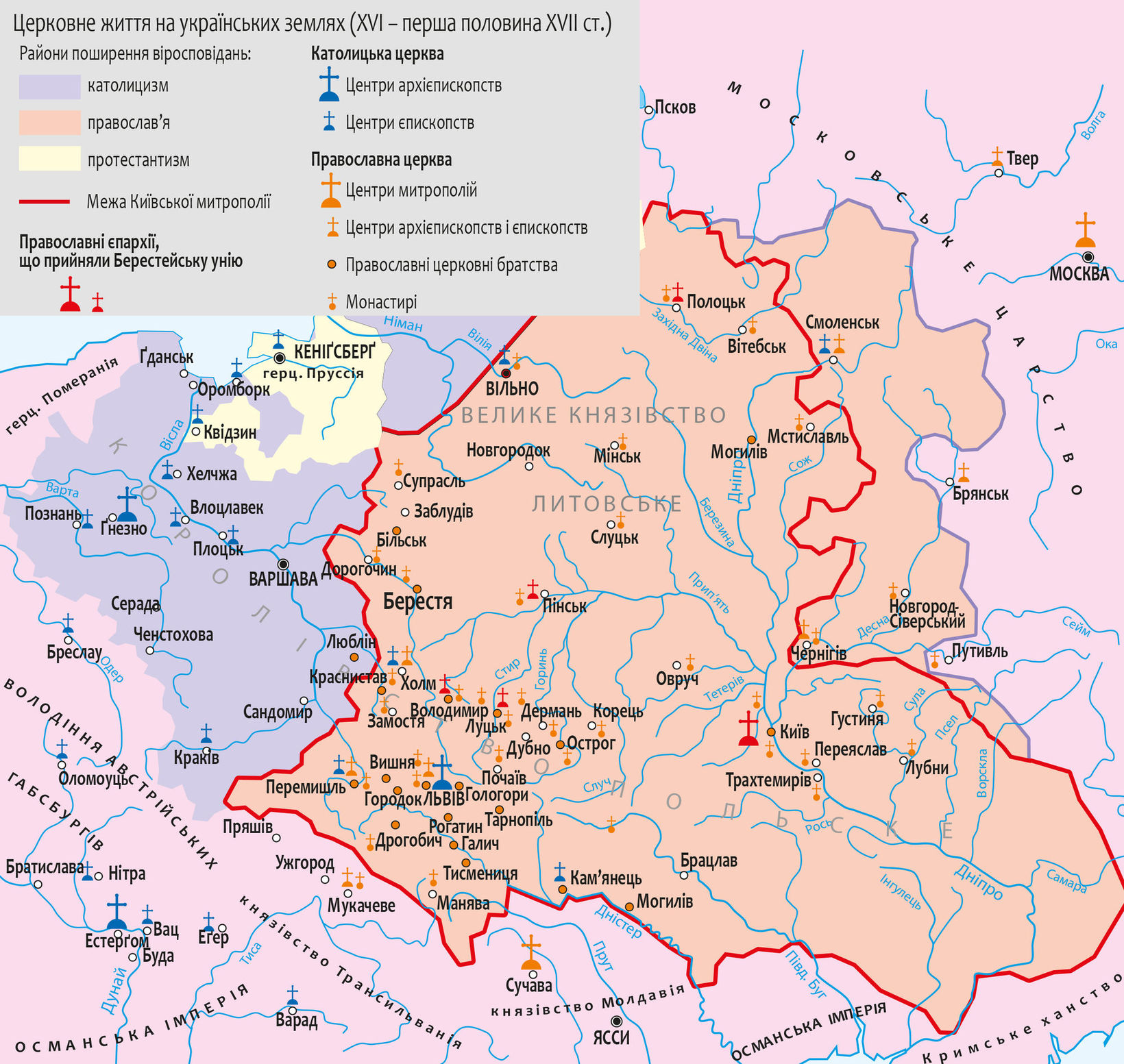4. Union of Brest 1596
The decline of the ancient state under pressure from the Mongol Horde and the transfer of a large part of Rus’ lands to Polish and Lithuanian rule in the 14th century led to the displacement of the Metropolitan See of Kyiv and attempts to divide it. However, being on the border of East and West Europe, the ecclesiastical elites took repeated steps to restore Christian unity. Bishops of the Kyivan Metropolia took part in the ecumenical councils of the Latin Church in Lyon (1245) and Constance (1418). The Galicia-Volyn prince Danylo Romanovych (1238–1264) in pursuit of support for his struggle against the Horde entered into an agreement with the See of Rome and received a royal crown from Pope Innocent IV in 1253.
 The Brest Declaration (Hramota). Photo from the Central State Archives of Ukraine in Lviv
The Brest Declaration (Hramota). Photo from the Central State Archives of Ukraine in Lviv
The Florentine Union between Rome and Constantinople in 1439 received a positive reception in what is now the Ukrainian and Belarus lands. One of the founders of the Union was Metropolitan Isidore of Kyiv. The Pope elevated him to the dignity of cardinal and appointed him legate to Poland, Lithuania and Muscovy. The Florentine agreement, however, was rejected by the Muscovite faction of the Metropolia. In 1448, the Moscow Church ultimately separated from Kyiv by arbitrarily proclaiming its autocephaly, which Constantinople recognized only 141 years later (1589), when Muscovy (in by no means canonical fashion) became a patriarchate.
In the Polish-Lithuanian Commonwealth in the 16th century the Roman Church, being in fact the state religion, received special support from the authorities while the faithful of the Eastern rite were often discriminated against and had their rights circumscribed. However, Western Christianity at that time experienced maybe the greatest crisis in its history on account of the Reformation. Protestant ideas from Germany began to spread rapidly in Lithuania and Poland. The Kyivan Metropolia, which remained under the canonical jurisdiction of Constantinople, could not receive adequate support from the mother Church after the Ottoman conquest of Byzantium in 1453, and so was experiencing difficult times. The bishops of the Kyivan Metropolia, therefore, began to look for more effective ways of dealing with the internal crisis and the external threats.
At the end of the 16th century, the bishops of the Kyivan Metropolia made a Synodal decision to reestablish communion with the Apostolic See of Rome. Thus, the Union of Brestwas concluded in 1596
 The Union of Brest. Mural in the Church of the Nativity in Zhovkva. Artist Julian Butsmaniuk
The Union of Brest. Mural in the Church of the Nativity in Zhovkva. Artist Julian Butsmaniuk
The visionaries of the union aimed not only to preserve the traditional church structure and eastern (Byzantine) rite, but also to resist assimilation and conversion of Ukrainian and Belorussian eastern rite Christians of the Polish Lithuanian Commonwealthto Polish Roman Catholicism. In the preparatory period, church and lay leadersconsidered a combination of two projects — a “regional union” and a “universal union.” The first, supported by the Polish King Sigismund III, envisaged a union of the Kyiv Metropolia with the Apostolic See. The second project, sponsored by Prince Kostiantyn Ostrozky, aimed to unite all Orthodox patriarchates with Rome. The bishops of the Kyivan Metropolia chose the first project, which they believed to be more realistic, and on December 23, 1595 delegated two bishops, Ipatiy Potiy and Cyril Terlecki, to travel to Rome to present the proposal to Pope Clement VIII. Differences in the vision of how to unify the Church was the reason not all bishops and faithful of the Kyivan Metropolia supported the model approved by the 1596 Council of Brest. Some of them insisted on maintaining canonical dependence on the Patriarchate of Constantinople and went into outright opposition to the supporters of the Union. A period of tension and religious polemics insued. In 1620, Patriarch Theophanes of Jerusalem secretly ordained a parallel Orthodox hierarchy, . At the height of civil unrest, Bishop Josaphat Kunonsevych, the eastern Catholic Bishop of Polotsk was murdered in the town of Vitebsk in 1623. (Archbishop Josaphat was beatified by Pope Urban VIII in 1641 and canonized by Pius IX in 1867). Polish government authorities resisted recognizing the parallel Orthodox hierarchy until 1632.
In Halychyna (Galicia), where Polish-Ukrainian antagonism was particularly tense, union with Rome was resisted for almost a centuryThe Przemysl Eparchy accepted the union only 1691, while the Lviv Eparchy- in 1700. The Synod of Zamość institutionalized the status of the Uniate Church, as this union was called, in 1720 as the only eastern rite Church in the lands of the Commonwealth.
 Church Life in Ukrainian Lands (XVI - First Half of XVII Century)
Church Life in Ukrainian Lands (XVI - First Half of XVII Century)